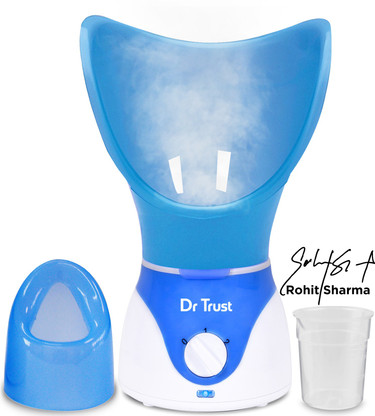

.jpg)
Following established methods 17 real economic costs using the ‘top down’ approach were calculated, which allocates total hospital costs down to the level of a unit (for example, nursing ward or operating room), resulting in average costs per patient. Excluded were patients with burns caused by industrial or other home accidents (for example, steamers used to remove wallpaper).Īn approximation was made of the direct costs for medical treatment (hospital, emergency department) incurred by burn injuries due to steam inhalation therapy. This nationwide study provides the best possible evidence to discourage steam inhalation therapy.Īll patients with thermal injury due to hot liquid or hot vapour were identified from the 1998–2007 LIS records including one of the following terms in injury scenario ‘steam’, ‘vapour’, or ‘steam inhalation’.
#STEAM INHALER SERIES#
Cochrane reviews showed no proven benefits and case reports and patients’ series have already tried to draw attention to the risk of burns of steam inhalation therapy. Steam inhalation is a common home therapy for the common cold and recommended by GPs all over the world.

This is possible for subsets of cases too, provided the numbers are large enough. The number of emergency department cases can be estimated from multiplying the number of emergency department cases registered in LIS by the national number of admissions for injuries divided by the number of admissions for injuries in the LIS hospitals.

These hospitals form a representative sample of the general and university hospitals in the Netherlands providing a 24-hour accident and emergency service. LIS records the statistics of people treated at the emergency departments of selected hospitals in the Netherlands, injured due to an accident, an act of violence, or self-harm. The number of patients with burns related to steam inhalation therapy treated at emergency departments was estimated based on the Injury Surveillance System (LIS) of the Consumer Safety Institute. From this database the records of all patients admitted with burns due to steam inhalation therapy and selected data of surgery (skin graft), use of bladder catheters, and length of stay were retrieved. Data registered include: age, sex, percentage total body surface area burned (% TBSA), location of burn wounds, and cause of accident. Data from the prospective database of all patients admitted to the three burn centres in the Netherlands (Beverwijk, Groningen, and Rotterdam) were analysed from 1998 to 2007. To clarify the human and economic costs of steam inhalation therapy, the frequency and severity of scalds as a complication of steam inhalation therapy were investigated and the ensuing healthcare costs in the Netherlands. This study argues that the human and economic costs of the complications of this therapy in terms of burn injury are significant, and, as there is no proven benefit, steam inhalation therapy should not be recommended for the common cold. However, unfortunately the practice persists. Case reports 7 – 12 and a number of patients’ series 13 – 16 have already tried to draw attention to the hazards of steam inhalation therapy. However, not only is there no proven benefit, steam inhalation therapy can have severe adverse side effects, such as burn injuries, the usual scenario being overturning the bowl of steaming water, with the water ending up in the person's lap, causing severe scalds in sensitive body areas, such as the lower abdomen and genitals ( Figure 1).
#STEAM INHALER TRIAL#
This conclusion was based on six randomised controlled trials (394 trial participants) using heated water vapour in participants with the common cold. However, a Cochrane review (first version 2001, updated in 2006, 2009, 2011) 6 concluded that steam inhalation had not shown any consistent benefits in the treatment of the common cold and therefore it was not recommended in the routine treatment of common cold symptoms. GPs recommend it, and it is included as a recommendation in guidelines and patient brochures issued by societies of GPs, among others, in the Netherlands, US, and UK. Steam inhalation is a common home therapy for upper respiratory tract infections.


 0 kommentar(er)
0 kommentar(er)
